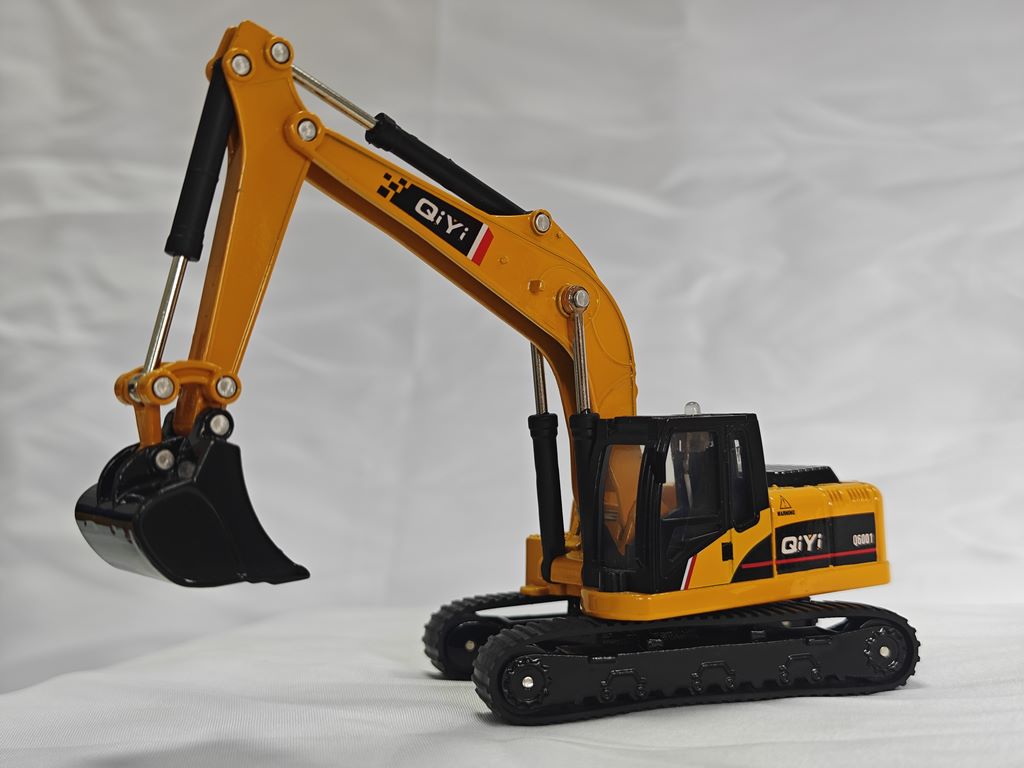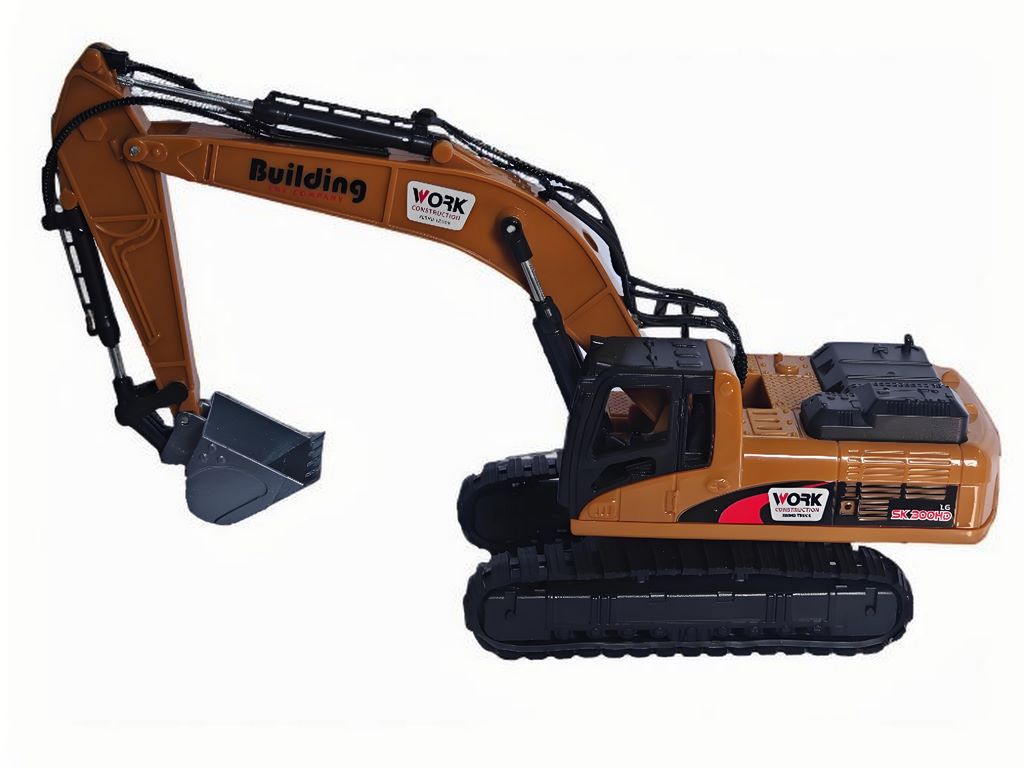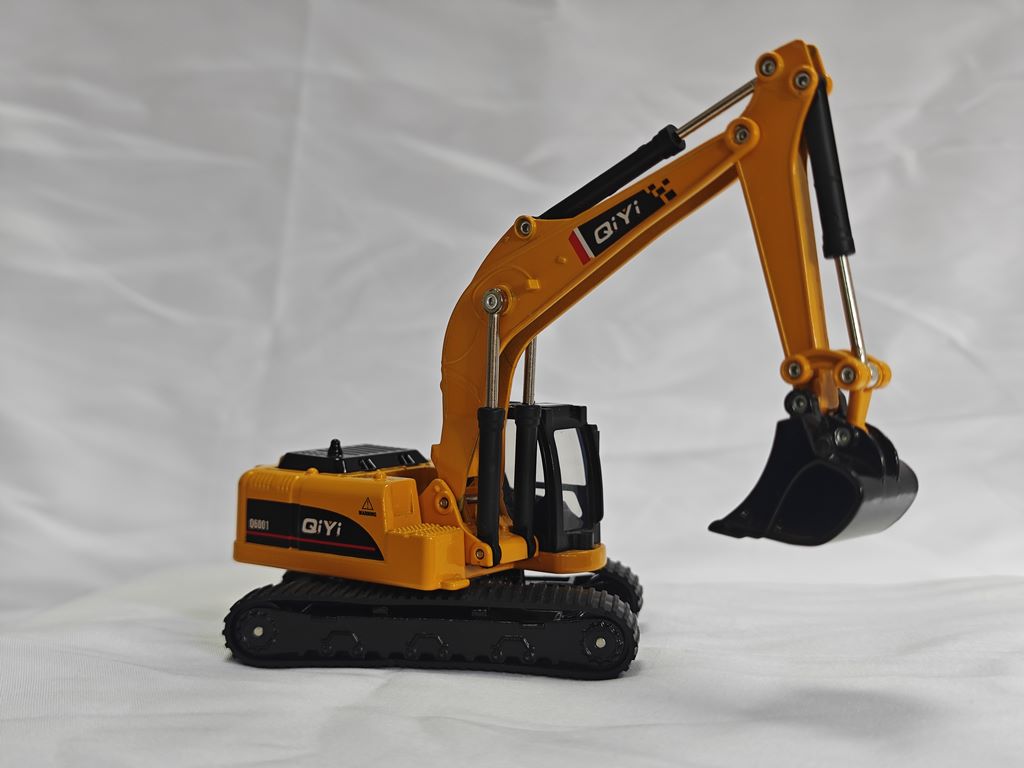Case Study of Agricultural Machinery Model Making: Taking Excavator Model as an Example
Case Study of Agricultural Machinery Model Making: Taking Excavator Model as an Example
1、 Material selection and preliminary preparation
The first step in model making is material selection. We choose ABS plastic (with good toughness, easy processing, and suitable for the structural complexity of agricultural machinery models) and PVC sheet (with low cost and strong plasticity, used for auxiliary components). First, mark the dimensions of each part of the model on the drawing, and then use a laser cutting machine to cut the ABS sheet into basic components such as tracks, fuselage, and boom. The PVC sheet is cut into counterweights, small connectors, etc. Strictly align the drawings during cutting to ensure that the component size error is ≤ 1mm, laying a solid foundation for subsequent assembly.
2、 Production process: from “splicing” to “restoration”

Assembling the skeleton: making the structure “stand firm”
First, use white latex to bond the tracks to the body, ensuring that there are no gaps at the connection between the tracks and the body; Then splice the arm components section by section and fix the key stress points with screws (simulating the mechanical connection logic of a real excavator). During the process, compare the drawings at any time, adjust the angles of the components, and make the overall posture of the model consistent with the real excavator.
Detail polishing: making the texture “real”
After assembly, use 80 grit, 120 grit, and 240 grit sandpaper to gradually polish the edges and seams of all components. When polishing, focus on handling the “chain link transition” of the track, the “metallic luster” of the arm frame, and the “streamlined contour” of the body, making the surface of the model smooth and free of burrs, and restoring the industrial texture of real machinery.
3、 Post processing: coloring and aging to bring the model to life

Bottom layer coloring: lay out the “base color”
First, spray the entire model with yellow primer (covering the natural color of the plastic to enhance the adhesion of subsequent colors). When painting, keep the spray gun 20cm away from the model and move it at a constant speed to ensure that the primer evenly covers all components.
Local coloring: restore “details”
Spray black paint on the tracks, counterweights, and other parts to simulate the “metallic texture” of a real excavator;
Spray bright yellow paint on the body, arm frame and other main parts to restore the iconic color scheme of agricultural machinery;
The brand logo “QiYi” is hand drawn with a black oil-based pen and protected with transparent varnish, making the logo clear and wear-resistant.

Aging treatment: increase the “sense of time”
Use aged powder (simulating soil and wear marks) to lightly sweep the edges of the track and the connection of the arm frame, and then use a damp cloth to locally wipe to make the model appear as if it has been used, restoring the traces of agricultural machinery used in field operations.
4、 Assembly and Quality Inspection: Let the Model “Land”
Assemble all components in the order of the drawings, with a focus on checking key points such as track tension, boom range of motion, and aircraft stability. After assembly, it is placed in a simulated construction site scene for shooting, allowing customers to visually see the finished product effect of “factory produced” – from the precision of material cutting, to the uniformity of coloring, to the naturalness of aging, each link strictly follows industrial grade production standards, with a reduction rate of over 90%.
This case simulates the factory level production process from material selection to process details, and then to post-processing, allowing customers to truly experience the texture and restoration of “professional factory production”, perfectly meeting the production needs of agricultural machinery models.